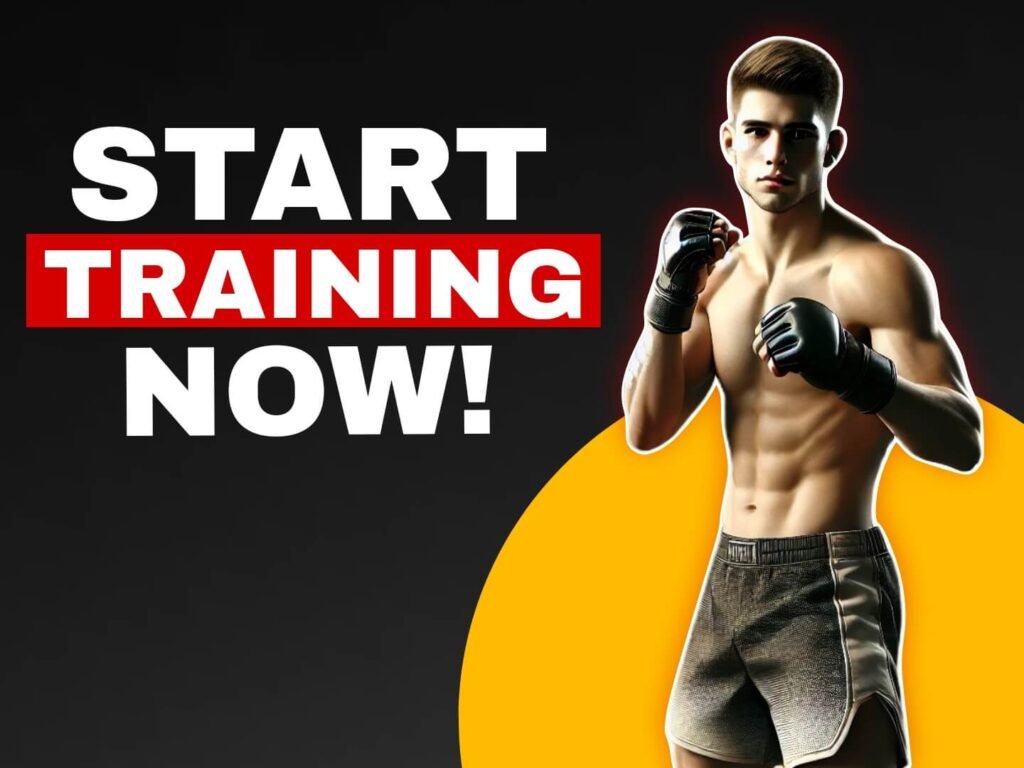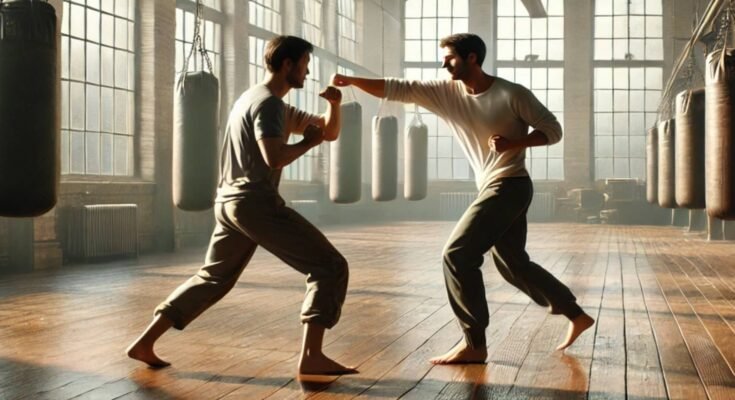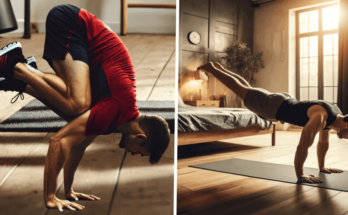If you’re reading this, it means you’re ready to learn how to fight. If you’re interested in self-defense, building confidence, or improving your mental, physical health, you’ve come to the right place. Learning how to fight can make a big change in your life. This guide will help you learn the basic techniques building a fighter’s mindset and all the steps you need to start your journey.
Why Learning How to Fight is Important
Before we dive into the steps, it’s important to know that fighting isn’t just about throwing punches, kicks or learning cool moves. It’s about building self-discipline, getting stronger physically and mentally and building a powerful mindset that helps you in every part of your life. Imagine you’re in a situation where someone is hurting your mom or trying to rob you. What would you do just stand there and watch? You’ve to be ready anytime to protect yourself and the people you care about. It’s not about winning or losing, it’s about having the courage to protect. Or think about someone bullying you, are you just going to let it happen? Learning how to fight gives you the power to stand up for yourself and protect the people around you, and it also builds confidence, discipline and mindset.
1. Developing a Fighter’s Mindset
The first step is to change your mindset from an average one to a mindset full of confidence and discipline. When you start learning, you might feel very tired, frustrated and you’ll feel like giving up, and many people quit, but you’ve to keep pushing! A right mindset will help you keep going even in tough situations.
Here are some steps to develop a fighter’s mentality:
• Discipline: Learning how to fight requires following routines, building healthy habits and staying away from the distractions. Discipline helps you keep going and not give up.
• Consistency: Now that you have discipline, the next step is to stay consistent, this is very important in fighting, like any other skills. It means practicing every single day without making excuses, even if it’s hard. With consistency, you’ll improve little by little and get better everyday.
• Patience: Learning how to fight takes time, and you won’t master the skills in a day, a week or even a month, but that doesn’t mean you should give up. You’ve to be patient and keep pushing forward even if things don’t go as planned. Remember progress takes time.
• Confidence: Building confidence is very important. As a fighter, I can tell you that believing in yourself, trusting your abilities, and knowing that you have much more potential than you think, will naturally build confidence. Confidence makes you stronger in real-life situations as well as in training.
2. Find The Right Fighting Style for yourself
There are many fighting styles, and every style has its own strengths. Whether you want to learn self-defense or a style that includes a full body workout. From my experience I’d prefer a fighting style that includes a full body workout because it makes you stronger by conditioning your whole body and also teaches how you can defend yourself. Choose the style that suits you best.
Here are some popular fighting styles:

• Boxing: Boxing is a fighting style that focuses on punches, footwork, and head movements to dodge attacks. It’s great for building upper body strength and improving balance.
• Kickboxing: Kickboxing is a style that mixes punches and kicks, creating strong and brutal combos. It’s great for both upper body and lower body.
• Muay Thai: Muay Thai is known for its powerful use of elbows, knees and close range moves
• Brazilian Jiu-Jitsu (BJJ): Brazilian Jiu-Jitsu focuses on grappling and submission techniques, which are used on the ground. It’s very effective against bigger opponents.
• Karate: Karate is a martial art that focuses on using both hands and kicks. Karate helps to build strength, speed and flexibility
• Jeet Kune Do: Jeet kune do is a martial art created by Bruce Lee. This style is specially for street fights, focusing on speed, dodging and quick reflexes. It teaches you how to quickly react to your opponent’s movements.
It’s important to choose a fighting style that matches your goals. From my experience, if you’re looking for an all-around fighting skill, I think kickboxing would be a great choice. It combines both kicks and punches, it’s also good for building strength, speed, balance, discipline and confidence.
3. Basic Fighting Techniques
Once you’ve chosen a fighting style, it’s time to learn the basics. Here are some basic techniques that will help you get started:
Boxing Basics
• Jab: The jab is the first punch you learn in boxing, it’s very simple but very effective. The jab helps you to keep your opponent in distance, making it harder for them to reach you. The jab is the base for learning other punches.
• Cross: The cross is a powerful punch thrown with your right hand. It usually comes right after the jab. When you throw a jab it creates an opening for the cross.
• Hook: One of the strongest punches in boxing is the hook. It comes from the side instead of straight. You bend your arm and swing it toward your opponent’s head. You can quickly throw this punch on the face of your opponent and knock them out.
• Uppercut: Uppercut goes up instead of straight or side. You bend your knees slightly and then push your fist upward with full power, aiming for the opponent’s chin.
Kickboxing Basics
• Front Kick: It’s the first kick you learn in kickboxing. A simple but very effective kick. You lift your knee up and then kick straight forward, you can aim for your opponent’s stomach or head.
• Roundhouse Kick: A powerful kick that comes from the side. You swing your leg around from the side, like you’re trying to hit your opponent with the top of your foot. When you hit this kick with full power on your opponent’s body or head, your opponent could lose their consciousness.
• Low Kick: A low kick is when you kick your opponent’s legs around their thighs or knees. This kick can slow them down.
Muay Thai Basics
• Elbows: Elbows are very strong, powerful and brutal. You swing your elbow toward your opponent’s face. They’re very effective in close range fights. They can cause a lot of damage.
• Knees: Knee strikes are very strong and powerful. You lift your knee up and hit your opponent’s stomach or chest. It works best when you’re close to your opponent, like in a clinch. Knee strikes can cause a lot of damage.
Brazilian Jiu-Jitsu Basics
• Guard: The guard is when you’re laying on your back but using your legs to control the person. You can keep your legs in front of them or you can wrap them around their body to stop them if they’re getting too close. It’s a way to protect yourself.
• Triangle Choke: It’s a very strong move, where you wrap your legs around their neck and one arm, then you tighten to stop their breathing.
• Armbar: A submission technique where you hold your opponent’s arm and straighten it until they tap out.
Jeet Kune Do
• Straight Punch: It’s like a jab but more fast, aimed at the opponent’s face.
• Wing Chun Punch: A Wing Chun punch is a quick punch that comes from the side and is repeated fast to surprise your opponent.
• Side Kick: A powerful kick that comes from the side, using your heel and aimed at your opponent’s face, body or legs.
Jeet Kune Do is all about speed, defense and reflexes.
4. Conditioning Your Body for Fighting
You also need to be physically prepared. A strong body helps to build a strong mind, and conditioning is the key.
• Cardio: Fighting takes a lot of energy, so building stamina is very important. Running, cycling, jump rope and other cardio exercises boost’s your stamina.
• Flexibility: Being flexible improves your kicks and helps to prevent injuries.
• Hitting Yourself: It might sound weird, but it’s a common method in martial arts to make your body stronger and help you prepare for hits during a fight. For example, hitting punches or tire on your core to make it tougher and stronger, so when someone hits you there you don’t feel the pain as much.
In today’s world, it’s very important to learn a fighting skill to protect yourself and others. Having the ability to defend yourself and others, also boosts confidence. Anything can happen at any time, you’ve to be ready to face the challenges. Remember, these techniques can be very powerful and dangerous. It’s important to use them in situations where you need to protect yourself or others. Martial arts are about discipline, mindset, respect and control. Never use your skills to harm someone.
If you’re not in the position to go to an MMA or fighting gym or you don’t have enough time, you can still learn these skills at home. You can use apps like Kayyo personal MMA trainer app. You can take video lessons and schedule workout plans in this app.
Conclusion
Learning how to fight isn’t just about learning moves or throwing punches and kicks, it’s about becoming stronger in your mind, staying consistent, disciplined and believing in yourself. Learning how to fight takes time, so be patient, stay calm and keep going, keep pushing forward.

Frequently Asked Questions (FAQs)
Q1: What’s the best fighting style for beginner’s?
Boxing and kickboxing are great options for beginners, because they focus on basic punches and kicks.
Q2: How long does it take to learn how to fight?
It can take a few months or even years to get good, it depends on how much effort you’re putting in.
Q3: Can women learn how to fight?
Yes, of course! fighting is for anyone, who is ready to train, work hard and learn new skills.
Q4: What should I do if I get scared before the fight?
Breathe in and out deeply, and remind yourself of the efforts and training you’ve done to prepare.
Q5: How do I find a good martial arts coach?
Find a coach who has good experience, teaching skills and is supportive.




